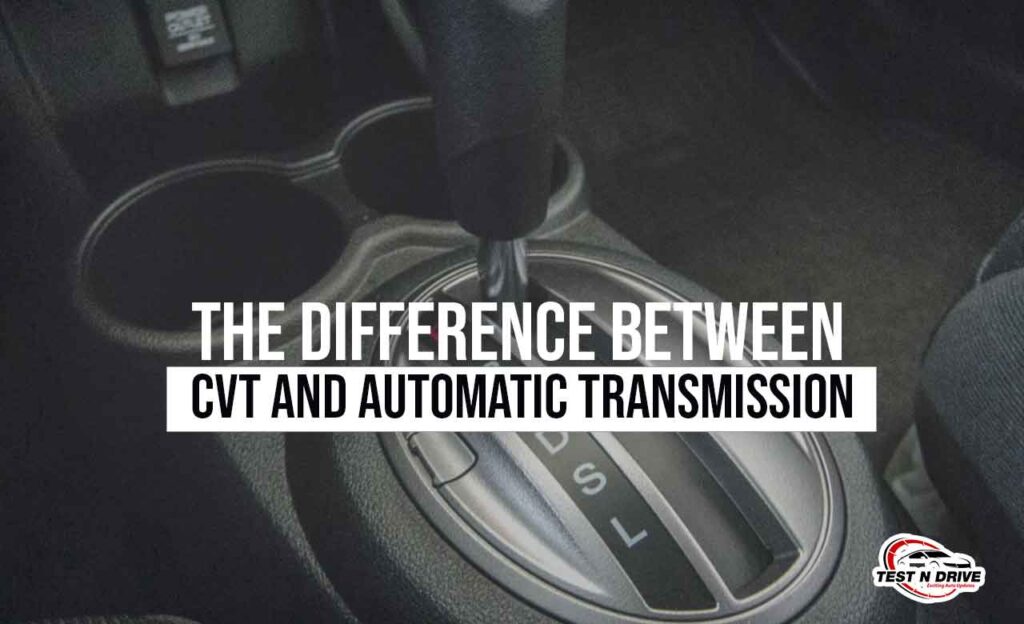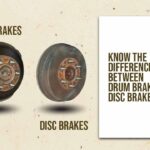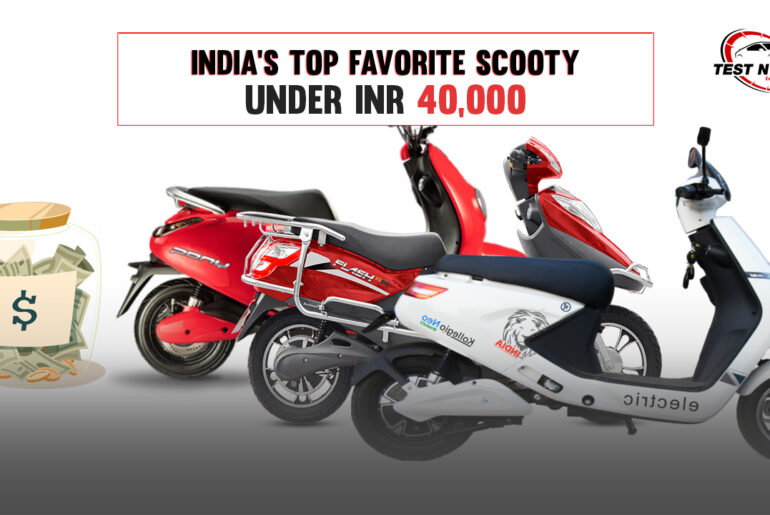To have a safe and reliable driving experience, you must first determine the sort of vehicle you wish to acquire. Optional transmissions include automatic and continuously variable transmission (CVT). Before buying your vehicle, you ought to gauge the advantages and downsides of each kind of transmission. So, in order to define both types of transmissions, we are having a discussion about CVT transmission vs. Automatic in this article.
How It Works
In an automatic transmission setup, you can change gears using the gearbox. The gears in the transmission are designed to reach a specified speed before going to the next gear. The CVT, on the other hand, adapts the engine speed to the circumstances. The rate at which the gears change up and down isn’t set in stone. Unlike an automatic transmission, a CVT’s gear shifts are visible when the vehicle’s RPM varies.
CVT Transmission Vs. Automatic Transmission
We’ve heard about two primary types of automotive transmissions for decades: automatic and manual. Continuous variable transmission, or CVT, is a novel type of transmission that has recently gained popularity. Leonardo Da Vinci is credited with introducing the CVT concept in the sixteenth century. But first, what exactly is a transmission? The transmission in your car is the mechanism that delivers power from the engine to the wheels. It is comprised of a bunch of cogwheels. This makes it plausible for your vehicle to move. In a modified transmission, the driver doesn’t have to genuinely switch the vehicle’s gears, as in a manual transmission. It’s a transmission that moves all alone. The quantity of cog wheels in the framework is alluded to as velocities, and each stuff is restricted to a specific vehicle speed.
CVT – Drive Type
A CVT is a sort of automatic gearbox that uses a belt and other torque transmission devices to permit an endless number of gear ratios. This approach is utilized by the CVT to pick the savviest motor speed for each driving circumstance. Drivers won’t see the change in gears, unlike with a standard redid transmission.
They will, regardless, notice an assortment in engine speed, or RPM, which is lower for cruising and higher for speed increment. When looking at the two power transmissions, it is apparent that the CVT Transmission enjoys the benefit as far as proficiency. The CVT is used in most hybrids nowadays to help maximize fuel economy.
When driving up steep inclines, another difference between the two transmissions is noticeable. Under heavy load, normal automatic gearboxes might struggle. However, the CVT’s ability to provide the most optimal engine speed allows it to almost instantly determine the exact ratio needed to provide power without ever moving.
Although the CVT is more fuel-efficient than the AT, it is less popular due to other expenditures. An AT can cost anything from $1800 to $3400, while a CVT replacement can cost anywhere from $3000-$5000.
They are incredibly costly; however, they are likewise less dependable than the AT. Most of units bomb after about 100,000 miles or much less, and 9 out of multiple times, the whole transmission should be supplanted.
The reason for this is that the parts are exceedingly expensive and in low supply. Another disadvantage of the CVT is that it does not have the same amount of horsepower as the AT.

The Differences
A CVT, on the other hand, is a sort of automatic gearbox that uses a belt and other torque transmission devices to permit an endless number of gear ratios. The CVT utilizes this approach to pick the savviest motor speed for each driving circumstance. Drivers won’t see the change in gears, unlike with a standard redid transmission. They will, regardless, notice an assortment in engine speed, or RPM, which is lower for cruising and higher for speed increment. When looking at the two power transmissions, it is apparent that the CVT Transmission enjoys the benefit as far as proficiency.
The CVT is used in most hybrids nowadays to help maximize fuel economy. Another difference between the two transmissions is noticeable when driving up steep inclines. Under heavy load, normal automatic gearboxes might struggle; however, the CVT’s ability to provide the most optimal engine speed allows it to almost instantly determine the exact ratio needed to provide power without ever moving.
Although the CVT Cars are more fuel-efficient than the AT, it is less popular due to other expenditures. An AT can cost anything from $1800 to $3400, while a CVT replacement can cost anywhere from $3000-$5000. They are incredibly costly; however, they are likewise less dependable than the AT. Most units bomb after about 100,000 miles or much less, and 9 out of multiple times, the whole transmission should be supplanted. This is because the parts are exceedingly expensive and in low supply.
Pros of CVT Transmission
Shifting gears is the driver’s responsibility. Unlike an automated transmission, the diver can change gears as needed. A CVT is a good option if you drive up a steep hill. You can give the transmission more power by shifting to a lower gear. This means you get the maximum power out of the engine while exerting the least amount of effort.
Moreover, by using the motor’s power, the CVT amplifies the speed increase. It is amazingly effective when utilized for mechanized transmissions that depend on transmission power. If you use a CVT motor, you’ll likely notify less contamination and further developed vehicle control. Because you won’t be shifting down at a predetermined speed as you would with an automatic transmission, using a CVT engine in the city will also save you money on petrol and provide better mileage. With regards to driving encounters, there are many varying perspectives.
For the individuals who need to monitor their RPMs and have better command over their vehicle’s speed, a CVT is an ideal choice. This moreover allows them to drive the vehicle in comparable stuff for longer distances. This isn’t dependably a savvy thought since it puts the motor under a great deal of pressure. Plausible you’ll have to take it to a transmission shop sooner or later.
Engine Control
There will never be a period when you cannot control your vehicle. There aren’t any at all. Regardless of how long you push the pedals, your engine will respond, and when you release them, the engine will slow down, as will your speed.
The fuel economy is fantastic
Your vehicle’s speed swings somewhere between 40 and 100 kilometers each hour. The engine’s turns become less and less. The CTV gearbox moves the trading of turns from the engine to the wheels as the auto velocities up, and that is the place where the CTV wizardry happens.
Smooth drive & Security
Many CVT cars come with paddle shifters. As you shift gears, your car will not shake, the engine will have complete control over your displacement, and the engine will certainly be more related to the actual outcomes of your vehicle’s movement. Manufacturers can now use the car computer to inject force into the wheels for enhanced driving control when individual tires are sliding or losing traction.
Automatic transmission (working principle)
Albeit this piece centers around CVT changes, it’s important how ordinary Automatic varieties work. Inside, you’ll have the option to more readily comprehend the differentiation, how they relate, and what they mean for the driving experience on the off chance that you check out both.
Automatic Transmission – Advantages
The following are some of the advantages of automatic transmission over CVT transmission that people consider. To begin with, shifting does not involve continuous gear shifting. While changing gears, the automated shifting lets you relax and enjoy your trip. You won’t have to worry about using the e-brake because parking will take care of that for you.
You likewise gain significant driving experience. With just a murmuring sound from the gearbox working, a programmed transmission keeps a decent speed. Each gear has a preset speed, and when it hits that speed, it shifts up, obviating the need to increase the RPM. You won’t have to worry about gear slippage like you would with a CVT. Transmission problems are to blame for the gear slipping fault. Aside from that, you won’t have to worry about violent shifting, which is due to a lack of lube.
Conclusion
So, the above article discussed the difference between CVT and automatic transmission. Having the CVT transmission concerns in mind, such as gear slippage, hard shifting, loss of acceleration, and so on, you may choose automatic transmission instead. CVT, on the other hand, is great for heavy traffic and requires constant shifting up and down, giving you more control.
Also, if we talk about some of the positives and advantages of CVT transmission, then we can find that whatever the engine speed comes, CVT will always give good performance with better fuel efficiency. But if we talk about the automatic transmission, then the chances of stalling a vehicle are minimum which helps the user and the driver to face fewer issues while driving in heavy traffic. Also, the overall cost will be minimum as there is no cost of replacing the clutch. Finally, choosing Automatic and CVT transmission depends totally on the customers based on their choice of driving style.






